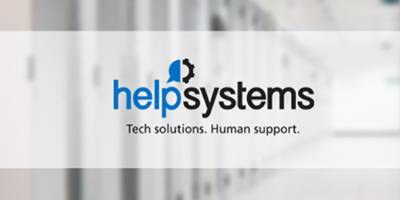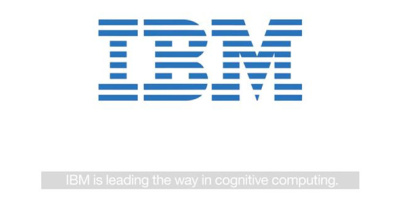Today's computing accomplishments just "scratch the surface" of what's possible with many-core and extreme-scale computing systems.
Citing the impact of multi- and many-core computing hitting the mainstream, and new developments in extreme scale computing as examples, Justin Rattner, Intel’s chief technology officer, told an Intel Developer Forum audience last week that the future of computing is being accelerated.
“Since 2006 Intel and the IA developer community have worked in partnership to realize the potential of multi- and many-core computing, with accelerating impact beyond high-performance computing to solving a wide range of real-world computing problems on clients and servers,” Rattner said during his Day 3 keynote in San Francisco. “What we have demonstrated today only scratches the surface of what will be possible with many-core and extreme scale computing systems in the future.”
Rattner enumerated a number of initiatives that Intel is spearheading including the following:
• New “Near Threshold Voltage Processor” from Intel Labs challenges the computing system status quo with an experimental Pentium-class Intel architecture CPU delivering five times the energy efficiency and the ability to run off a solar cell the size of a postage stamp.
• Intel Labs released a “Parallel JS” engine to the open source community, adding data-parallel capabilities to JavaScript to speed up browser-based services such as computer vision, cryptography, and 3-D games by up to eight-fold.
• Intel Labs unveiled the Hybrid Memory Cube with seven-times better energy efficiency than today’s DDR3 memory along with the highest data rates ever seen in a single DRAM device.
• Rattner highlighted the accelerating impact of multi- and many-core computing, expanding beyond HPC with developers solving a wide range of everyday computing problems on both clients and servers.
Computing to the Extreme
Intel continues to push tech beyond today’s limits, looking for the next big leaps that take computing to the next levels of performance with much less power consumption than is possible today, the company says. As an example, Rattner demonstrated a Near-Threshold Voltage Processor using novel, ultra-low voltage circuits that dramatically reduce energy consumption by operating close to threshold, or turn-on voltage, of the transistors. This concept CPU runs fast when needed but drops power to below 10 milliwatts when its workload is light—low enough to keep running while powered only by a solar cell the size of a postage stamp.
While the research chip will not become a product itself, the results of this research could lead to the integration of scalable near-threshold voltage circuits across a wide range of future products, reducing power consumption by 5-fold or more and extending always-on capability to a wider range of computing devices. Technologies such as this will further Intel Labs’ goal to reduce energy consumption per computation by 100- to 1000-fold for applications ranging from massive data processing at one end of the spectrum to terascale-in-a-pocket at the other, according to the company.
The Hybrid Memory Cube, a concept DRAM developed by Micron* in collaboration with Intel, demonstrates a new approach to memory design delivering a 7-fold improvement in energy-efficiency over today’s DDR3. Hybrid Memory Cube uses a stacked memory chip configuration, forming a compact “cube,” and uses a new, highly efficient memory interface which sets the bar for energy consumed per bit transferred while supporting data rates of one trillion bits per second. This research could lead to dramatic improvements in servers optimized for cloud computing as well as ultrabooks, televisions, tablets and smartphones.
Multicore’s Many Uses
Multi-core, the practice of building more than one processing engine into a single chip, has become the accepted method to increase performance while keeping power consumption low. While many-core is more of a design perspective, rather than incrementally adding cores in a traditional approach, it's reinventing chip design based on the assumption that high core counts is the new norm.
Rattner highlighted the progress multi-core computing has seen since he introduced Intel’s first dual-core processor at IDF five years ago. Today Intel’s multi- and many-core processors are hosting a myriad of important applications across a wide range of industry sectors, including some surprising new uses in the rapidly advancing world of high-core-count computing.
Rattner described some of the latest applications of this technology along with the software tools and programming techniques that are enabling developers to harness the power of multi- and many-core computing in several key areas, including:
• Faster Web Apps: Extending JavaScript with data-parallel programming features, using a just-released experimental Parallel JS open-source engine from Intel Labs, to enable a new class of browser-based apps in domains such as photo and video editing, physics simulation, and 3-D gaming for desktop and mobile personal computers, including Ultrabooks.
• More Responsive Cloud Services: Best-in-class increases in queries per second for Memcached applications using the multi-core capabilities of Intel’s 2nd Generation Intel Core microprocessor to enable the world’s largest Internet sites to improve their Web app responsiveness and minimize user wait times for critical data.
• Improved PC Client Security: Parallel cryptographic and facial recognition services to improve security on Ultrabooks and traditional notebook and desktop personal computers by utilizing all of the IA and graphics cores on 2nd Generation Intel Core microprocessors in a heterogeneous fashion.
• Lower Cost Wireless Infrastructure: Collaborative research with China Mobile to replace the custom and costly base-station hardware used on cell towers today with a fully programmable and far more cost-effective, software-based PC alternative.
• Really Big Science: Unlocking the mysteries of the universe by utilizing clusters of Intel multi-core processors at CERN* to greatly improve their high-energy physics app performance and to quickly port their code to Intel’s upcoming Many Integrated Core (MIC) architecture product family.





















 More than ever, there is a demand for IT to deliver innovation. Your IBM i has been an essential part of your business operations for years. However, your organization may struggle to maintain the current system and implement new projects. The thousands of customers we've worked with and surveyed state that expectations regarding the digital footprint and vision of the company are not aligned with the current IT environment.
More than ever, there is a demand for IT to deliver innovation. Your IBM i has been an essential part of your business operations for years. However, your organization may struggle to maintain the current system and implement new projects. The thousands of customers we've worked with and surveyed state that expectations regarding the digital footprint and vision of the company are not aligned with the current IT environment. TRY the one package that solves all your document design and printing challenges on all your platforms. Produce bar code labels, electronic forms, ad hoc reports, and RFID tags – without programming! MarkMagic is the only document design and print solution that combines report writing, WYSIWYG label and forms design, and conditional printing in one integrated product. Make sure your data survives when catastrophe hits. Request your trial now! Request Now.
TRY the one package that solves all your document design and printing challenges on all your platforms. Produce bar code labels, electronic forms, ad hoc reports, and RFID tags – without programming! MarkMagic is the only document design and print solution that combines report writing, WYSIWYG label and forms design, and conditional printing in one integrated product. Make sure your data survives when catastrophe hits. Request your trial now! Request Now. Forms of ransomware has been around for over 30 years, and with more and more organizations suffering attacks each year, it continues to endure. What has made ransomware such a durable threat and what is the best way to combat it? In order to prevent ransomware, organizations must first understand how it works.
Forms of ransomware has been around for over 30 years, and with more and more organizations suffering attacks each year, it continues to endure. What has made ransomware such a durable threat and what is the best way to combat it? In order to prevent ransomware, organizations must first understand how it works. Disaster protection is vital to every business. Yet, it often consists of patched together procedures that are prone to error. From automatic backups to data encryption to media management, Robot automates the routine (yet often complex) tasks of iSeries backup and recovery, saving you time and money and making the process safer and more reliable. Automate your backups with the Robot Backup and Recovery Solution. Key features include:
Disaster protection is vital to every business. Yet, it often consists of patched together procedures that are prone to error. From automatic backups to data encryption to media management, Robot automates the routine (yet often complex) tasks of iSeries backup and recovery, saving you time and money and making the process safer and more reliable. Automate your backups with the Robot Backup and Recovery Solution. Key features include: Business users want new applications now. Market and regulatory pressures require faster application updates and delivery into production. Your IBM i developers may be approaching retirement, and you see no sure way to fill their positions with experienced developers. In addition, you may be caught between maintaining your existing applications and the uncertainty of moving to something new.
Business users want new applications now. Market and regulatory pressures require faster application updates and delivery into production. Your IBM i developers may be approaching retirement, and you see no sure way to fill their positions with experienced developers. In addition, you may be caught between maintaining your existing applications and the uncertainty of moving to something new. IT managers hoping to find new IBM i talent are discovering that the pool of experienced RPG programmers and operators or administrators with intimate knowledge of the operating system and the applications that run on it is small. This begs the question: How will you manage the platform that supports such a big part of your business? This guide offers strategies and software suggestions to help you plan IT staffing and resources and smooth the transition after your AS/400 talent retires. Read on to learn:
IT managers hoping to find new IBM i talent are discovering that the pool of experienced RPG programmers and operators or administrators with intimate knowledge of the operating system and the applications that run on it is small. This begs the question: How will you manage the platform that supports such a big part of your business? This guide offers strategies and software suggestions to help you plan IT staffing and resources and smooth the transition after your AS/400 talent retires. Read on to learn:
LATEST COMMENTS
MC Press Online